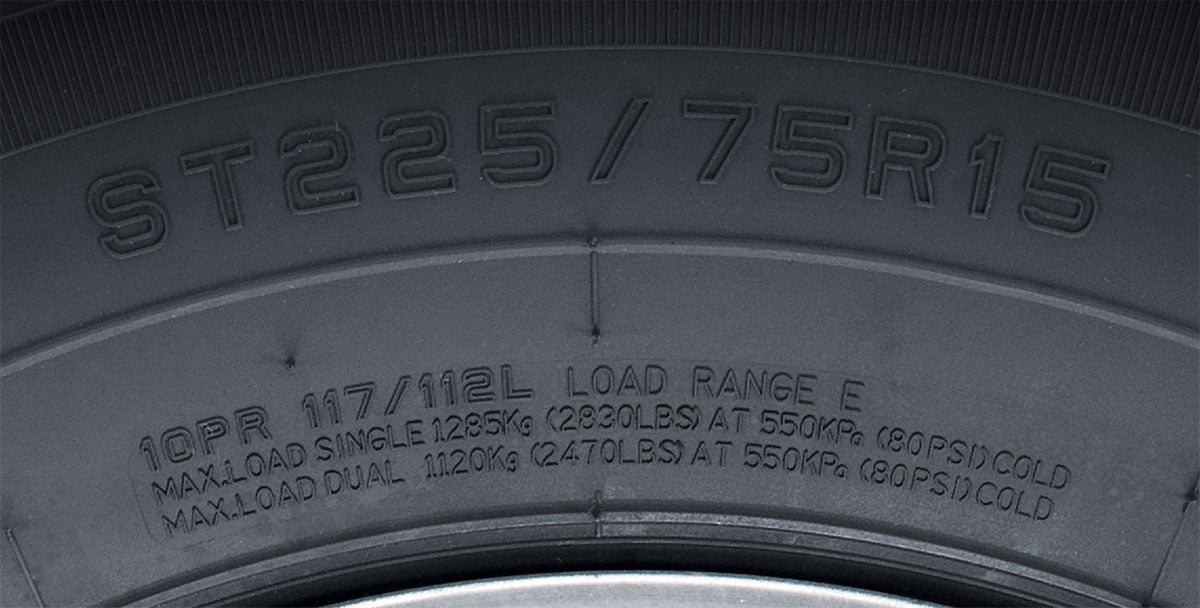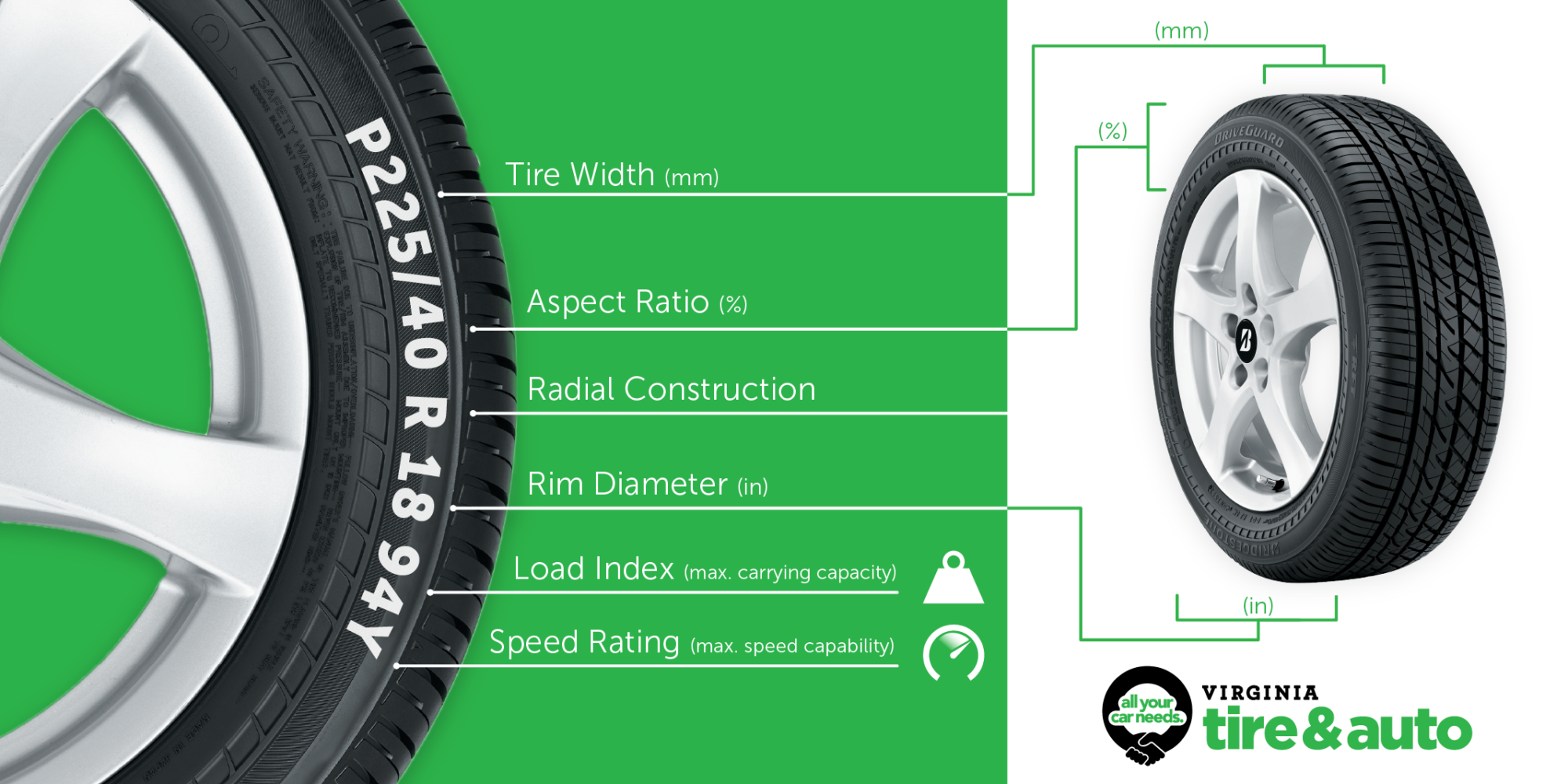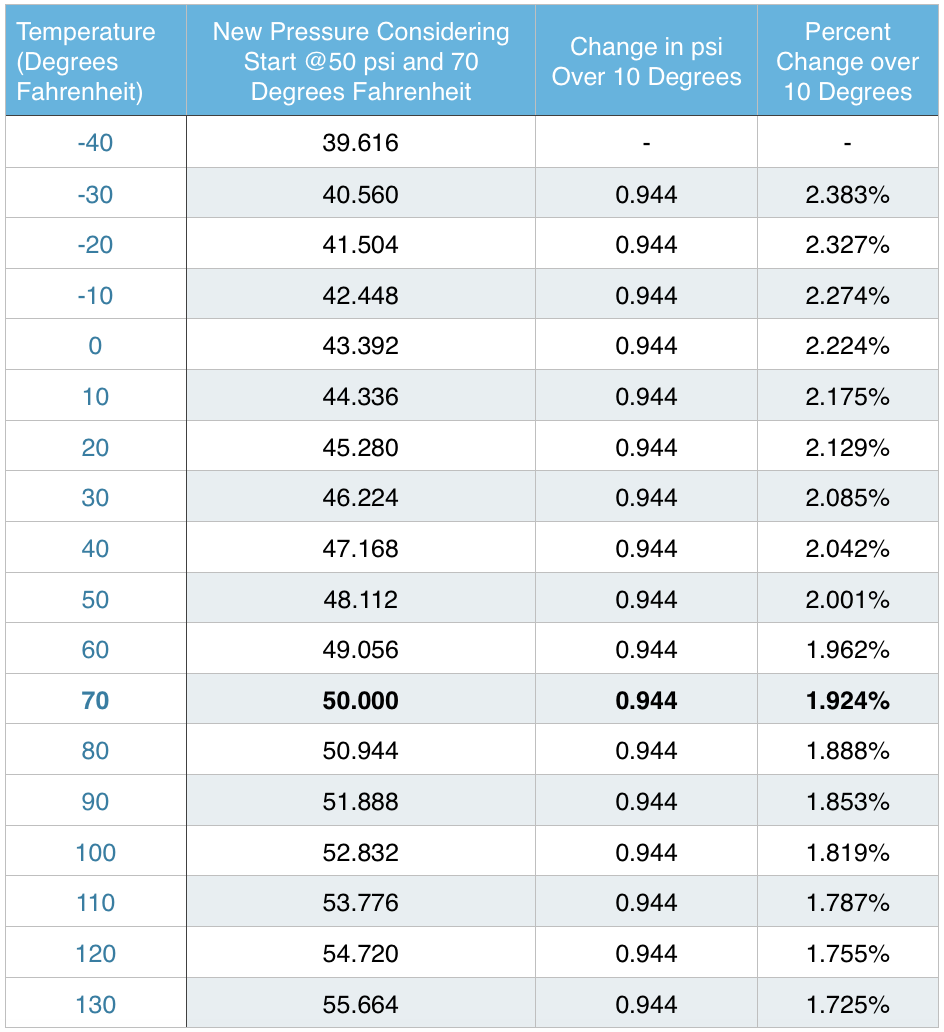
For this reason, regardless of the weather, your air pressure can increase about 5 PSI in the first half-hour of driving before stabilizing. It's also important in summer to keep in mind that driving equals friction between the road and your tires, which equals heat, which equals…you guessed it…an increase in tire pressure. The rule of thumb (best understood as our American counterparts put it) is that tire pressure will go up approximately one pound per square inch (PSI) for every 10 Fahrenheit increase in temperature. So, let’s say your manufacturer’s recommend inflation level is 35 PSI, on one of those all-time hot August afternoons, your tire pressure could be somewhere near 40 PSI.

Just as cold outside air causes the air inside your tires to contract in winter, warm outside air causes the air inside your tires to expand in summer. Before you know it, your tires are underinflated. Be sure to check your tire pressure regularly during the winter months. When the temperature drops, air contracts and as the molecules get closer together, the reduction in volume causes tires to lose their pressure. How do summer and winter temperatures impact tire pressure? When your tires are consistently inflated to the recommended air pressure, you enjoy greater tire life, performance and safety.
#AVERAGE CAR TIRE PSI HOW TO#
If you’re not confident about how to check your tire pressure, follow our handy 5-step Guide to Checking Tire Pressure.

If you’ve been driving with your tires over-inflated or under-inflated, immediately deflate them to the manufacturer’s recommended pressure for your driving safety. The result is poor gas mileage and higher fuel costs – up to 1.3 cents per litre! Depending on how often you fill up, that can lead to hundreds of dollars over the space of a single year. Vehicles with underinflated tires see reduced fuel economy because they make your engine work harder: underinflated tires put more tire surface in contact with the road, causing more rolling resistance and friction with the road.

Under inflation wears your tires on both outside shoulders because the edges are making excessive contact with the road. Premature wear, reducing your tire life by 15 per cent or more.That friction can lead to overheating, which can cause tread separation and blowouts in extreme cases. Also, when tire pressure is significantly low, more of the tire’s tread face touches the road and causes friction. Underinflated tires greatly increase braking distances and can dramatically affect steering and handling. When you drive with under-inflated tires, you risk: Blowouts. Bald strips can’t dissipate heat as well, and that means your tires can suddenly blow out.Rapid, uneven tire wear. Your tire will wear much faster, and only in the center because the rubber will bulge in the middle, increasing that area’s contact with the road.Problems with handling and safety. Your tires can’t give as much on the sidewall, and precise braking could be compromised.When you drive with over-inflated tires, you risk: What happens when your tires are overinflated or underinflated? Some models even place the stickers on the trunk lid, in the console or on the fuel door. You’ll find the manufacturer’s optimum or recommended tire pressure for your car on a sticker in the door jamb, or in your owner’s manual. How do you find your recommended tire pressure? You’ll also reduce your traction and you could even cause a blowout. When your tires are overinflated, the rubber rounds out at the top of the tire when you’re driving, and the centre will quickly wear out. One quick corner and your back end could slide out. Since tires inflated to the max can’t give as much on the sidewall, you might see strong cornering performance, but it could be at the risk of your braking threshold. The handling characteristics change at max pressure What happens when you inflate your tires to the maximum pressure? For everyday use, most passenger cars will have a recommended or optimum pressure of 30 or 32 PSI.

35 PSI,’ for example, indicates the maximum pounds per square inch pressure needed for your tire to support the weight of its maximum load-carrying capacity. There is a tire pressure marking on the sidewall of your tires, but this isn’t the optimum air pressure for your tires, it’s the maximum. What's the right tire pressure for your vehicle? Since inflation levels are invisible to the naked eye (unless your tire is almost flat), it’s important to understand how to find and maintain proper air pressure, and to be aware of the dangers of driving on over and under-inflated tires. One of the greatest risks to your everyday driving safety is the one thing you can’t actually see: your tire pressure.


 0 kommentar(er)
0 kommentar(er)
